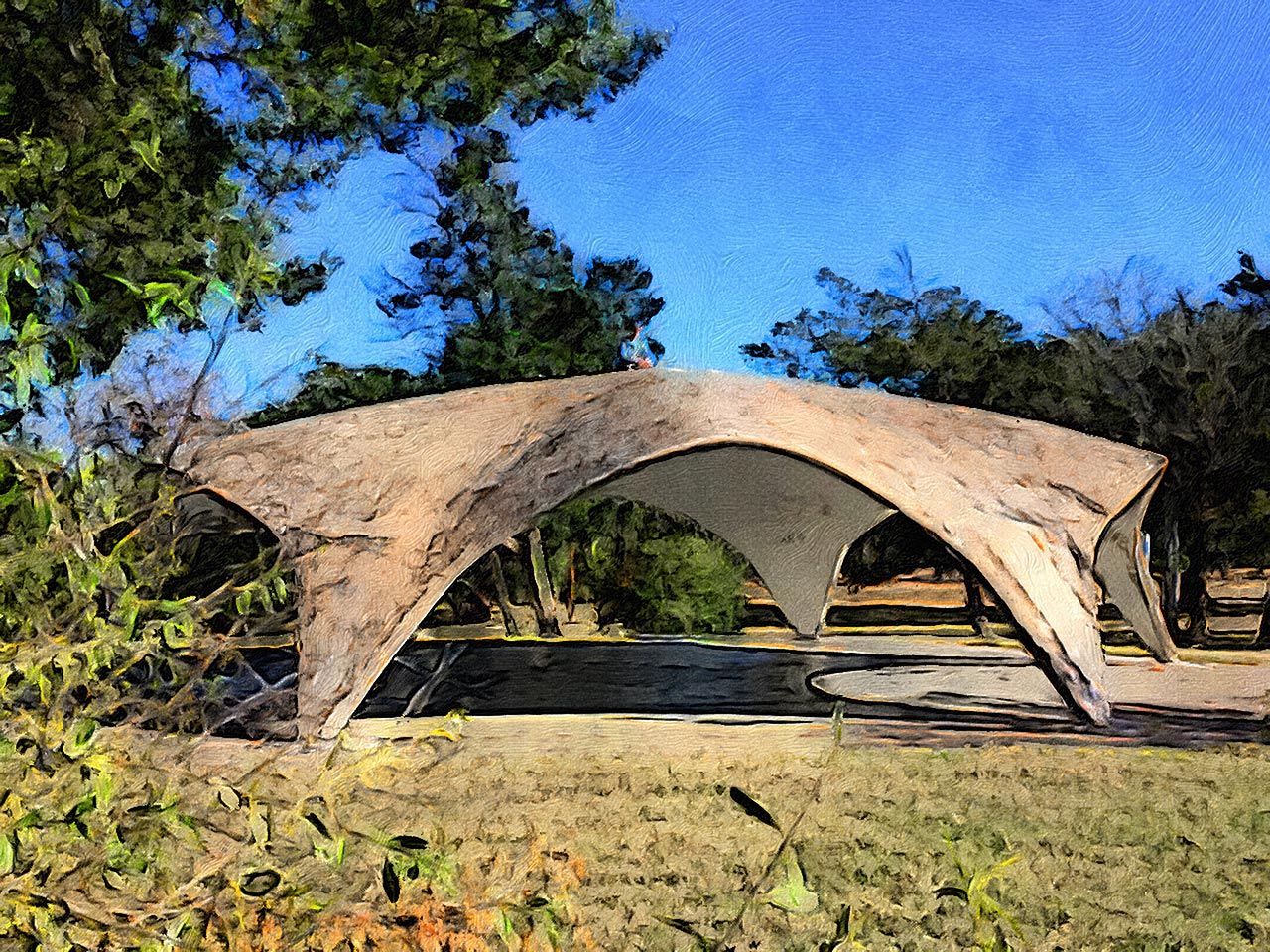
Bill Page: Hensel Park was an unofficial follow-up to an earlier recreational area that was a little further south, something called the Agriculture Engineering Farm. I think the university may have bought that land from the Putts Family.
Henry Mayo: The Gariske family owned where Hensel Park is.
Bill Page: So A&M owned this land, and the Agriculture College needed a place to practice operating motorized farm implements like tractors, so they dedicated some of the land that is now Hensel Park to accomplishing this task. Then, when it was turned into a park, for 15 or 20 years it was where everybody on campus went to have a picnic because you didn’t need a wagon or a horse. You could just walk over there.
And then eventually the University developed Hensel Park, which is named after a landscape architect, Fritz Hensel, who designed a lot of the landscaping on A&M’s main campus. Incidentally, Hensel donated much of his free time to the landscaping of the College Station Cemetery located on Texas Avenue.
They put a cabin in Hensel Park, called “Cashion Cabin,” where people could hold community events. That cabin, which no longer exists, was also home to both the local Boy Scouts and Girl Scouts. That cabin came from the “zoo” that was once a part of the A&M campus, near where the Mays School library is today. There was a small lake on that property, and in that lake, a small island, and that’s where the cabin was before it was moved to Hensel Park.
One of the most interesting features of today’s Hensel Park is the concrete “bandshell,” although it’s probably not really a bandshell, but that’s as good a term as any to describe it.
Henry Mayo: Actually, it’s called a “lift shape,” and it was originally designed by an A&M construction science professor by the name of James Marsh. “Lift shape" is a process for thin- shell concrete construction that was most notably used for the Medo Camera Company pavilion at the 1964 New York World’s Fair. If you look up pictures of that pavilion, it looks exactly like the pavilion in Hensel Park. Those are built using a wire-mesh skeleton upon which they spray a dry-mix form of concrete called gunite, which is used in a lot of backyard pools. It’s a remarkable structure there in Hensel Park, one which looks a little “futuristic” in my mind.
Bill Page: I believe the pavilion in Hensel Park was a prototype for the Medo Pavilion at the world’s fair and may have been built here as early as 1961 or thereabouts.
Henry Mayo: That’s almost 60 years ago, and it's still in shape, still strong, and occasionally, you’ll still see someone sitting on the top of the pavilion. The gunite “legs” of the structure reach all the way to the ground, and if you get up enough speed and you have enough traction on the bottom of your shoes, you can actually run up one of those legs to get to the top of the shell. Boys, including my own son, have been doing that for decades.
